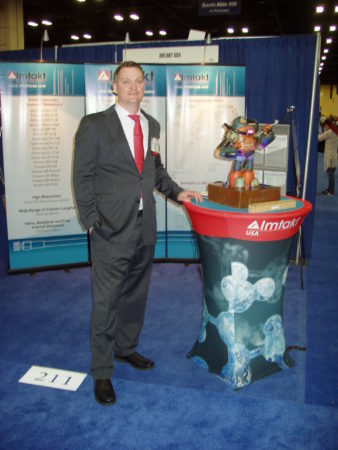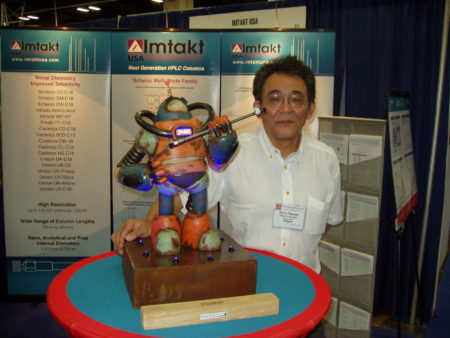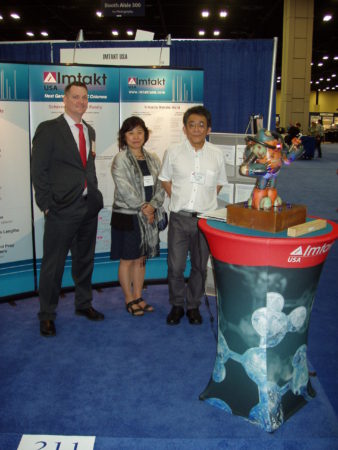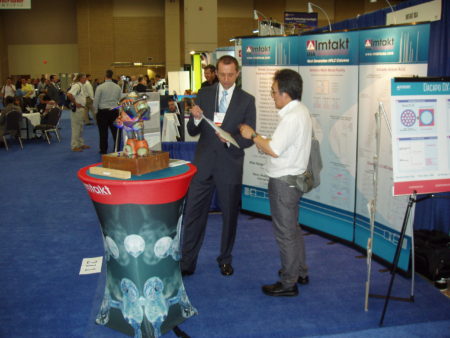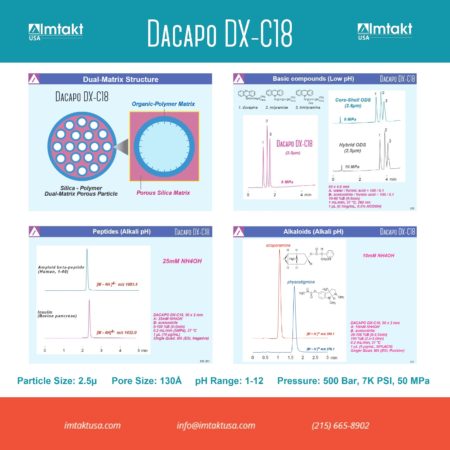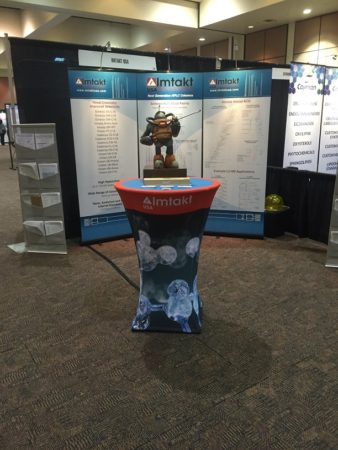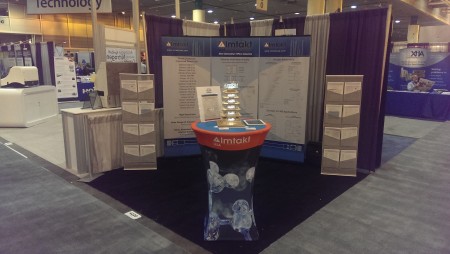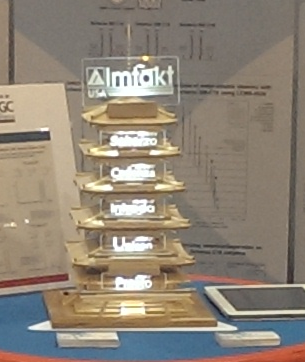Robert Puryeara, Piotr Macecha and Itaru Yazawab
aImtakt USA, Portland,OR, bImtakt Corp., Kyoto, Japan
Abstract: Organic acids come in a wide variety and are difficult to analyze on a single stationary phase. Our new Intrada Organic Acid column was designed for this purpose.
Introduction: Whether you are looking into the metabolomics of a disease through changes in TCA cycle carboxylic acids, or trying to analyze phosphoric or even sulfuric acids, attaining good chromatography for organic acids (OA), can be quite a challenge. This is true for several reasons. First, OAs are polar making them difficult to retain on traditional reversed phase columns without ion-pairing or derivatization, which further complicates analysis and data interpretation. Second, the presence of multiple pKa values can lead to variations in the charge states of your analytes, which may cause poor peak shapes including tailing, shouldering and even split peaks. Additionally, OAs are typically poor chromophores, making them difficult to analyze by UV-Vis detection, and CAD does not work well with gradient elutions.
Recognizing these challenges, we developed them most complete solution for OA analysis, with a novel stationary phase called Intrada Organic Acid. This proprietary multi-mode column optimizes the use of multiple stationary phase structures specifically targeting OAs, delivering the most complete LC-MS-based solution on the market today.
Experimental Conditions: Running conditions are shown within the figures. MS detection was used in all cases.
Result and Discussion: Figure 1 shows simultaneous analysis of the entire suite of OAs that comprise the TCA cycle. We achieved very good retention of these polar compounds with times ranging from 2.3 minutes to 5.4 minutes, without using ion-pairing or derivatization. We accomplished these results with excellent peak shapes for all analytes. Oxaloacetate does show some minor tailing with these conditions, but this is most likely due to the highly unstable nature of this compound, which spontaneously decarboxylates. Despite this challenge, we were able to achieve nearly perfect peak shape for oxaloacetate.
Figures 2 and 3 highlight the ability of Intrada Organic Acid to expand its capabilities into strong as well as inorganic acids,
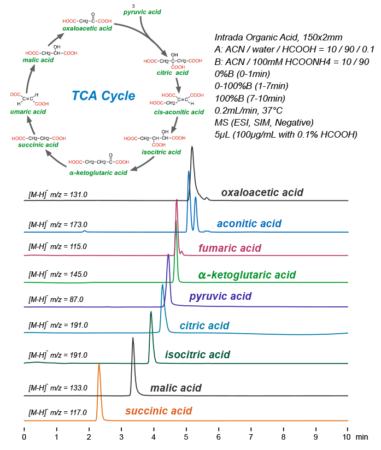
Figure 1: Improved analysis for all organic acids in the TCA cycle
as shown for phosphoric and sulfonic acids, respectively, and their organic derivatives. Figure 2 shows excellent retention and peak shape for not only the highly
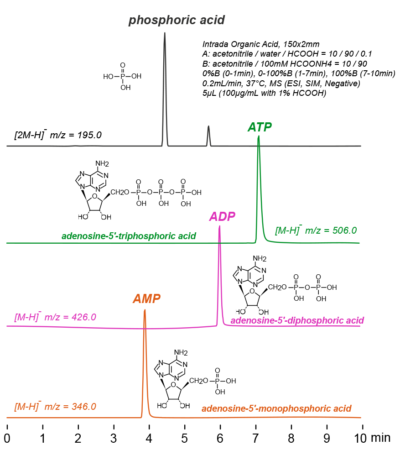
Figure 2: Analysis of a variety of phosphoric acids
polar phosphoric acid, but also AMP, ADP and ATP, which are also part of many metabolomic analyses. We accomplished these results due to the special design of this column’s stationary phase and because these columns only use metal-free column housings. We have previously shown phosphorylated compounds will readily interact with the stainless-steel column housings in traditional columns, resulting in the formation of metal (Fe, Ni, or Cr) salts, which can cause ion-suppression when using LC-MS. In figure 2, there is no evidence of metal salt formation due to the lack of ion-suppression, which could interfere with accurate data interpretation.
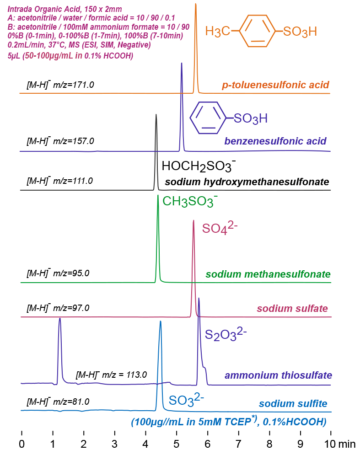
Figure 3: Analysis of a variety of sulfonic acids.
Figure 3 shows the analysis of several different sulfonic acid compounds. Conditions in this method were modified for ion-exchange mode and resulted in excellent retention and peak shape for all compounds, except for ammonium thiosulfate. This is likely due to the presence of the additional sulfur on this molecule, but conditions could be optimized if this was your primary analyte of interest. The ability to optimize elution through the use of a wide variety of mobile phases, presents a further advantage of our column design over current ion-exchange columns, providing end-users with multiple strategies to accomplish their separation objectives.
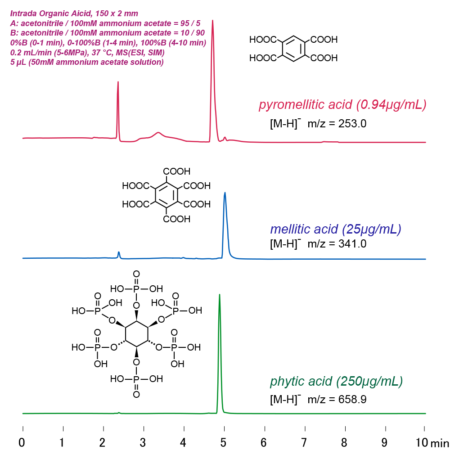
Figure 4: Improved peak shape for polycarboxylic acids
In figure 4 we show a strategy for using mobile phase optimization to overcome the challenges when analyzing OAs with multiple pKa values, in the analysis of polycarboxylic acids. For this specific challenge, we were able to achieve single sharp peaks for these multivalent compounds, utilizing a combination of normal phase mode in neutral conditions and ion-exchange. By using this strategy, we did not observe any peak splitting, shouldering or tailing, which are a common problem for these complex compounds. Therefore, under certain circumstances normal phase conditions might be preferred.
Conclusion: Organic acids comprise a staggeringly broad group, ranging from the simple single carboxylic acid-containing compounds, to strong phosphoric or sulfuric acids. They can be complex, as in the case of polycarboxylic acids, where multiple acidic residues and pKA values present significant chromatographic woes. As a group, they can be as challenging in their analysis as the varieties that are analyzed today. Equally varied are the solutions that chroma-tographers employ to analyze them. From the use of ion-chromatography, complex derivatizations, or even the use of ion-pairing reagents, these analyses used to require convoluted strategies, in terms of the use of a many different column types, analytical techniques and/or sample preparation methods to achieve analytical goals.
Here we show that our newly developed Intrada Organic Acid column can analyze a vast array of very different OAs, on a single column. The specially developed multi-mode stationary phases utilized in this column’s design provide the broadest capability for the analysis of OAs under MS-friendly conditions, on the market today. We have shown that its versatility, combined with its ability to be used with a wide variety of mobile phase conditions, enables optimization to meet a wide range of needs. Never before has such a solution been available to chromatographers. We have shown that whether you are analyzing simple carboxylic acids, like those in the TCA cycle, strong acids like phosphoric or sulfuric acids, or complex multivalent species with multiple pKa values, Intrada Organic Acid could be a single column solution for all your OA analysis needs. Please feel free to reach out to one of our column experts to learn how this revolutionary column could be used in your laboratory.

